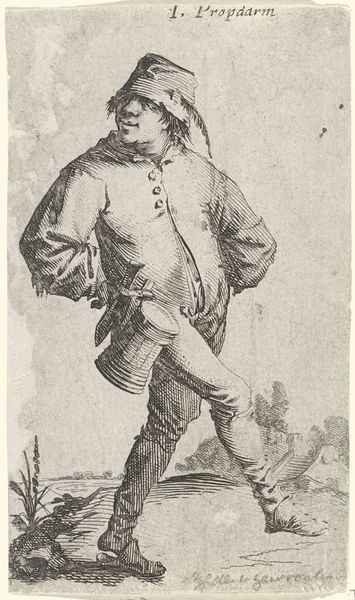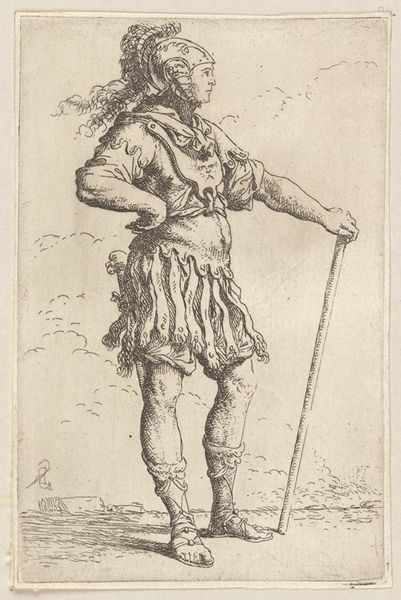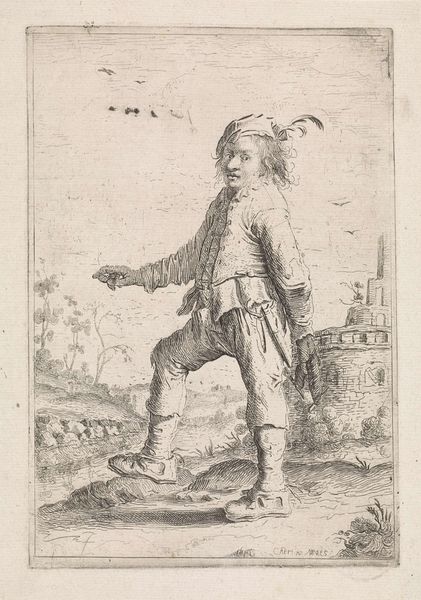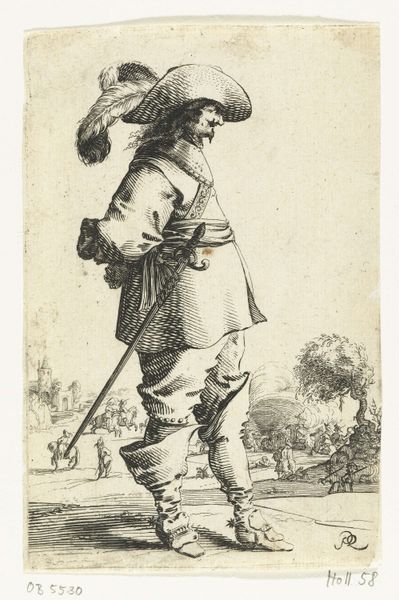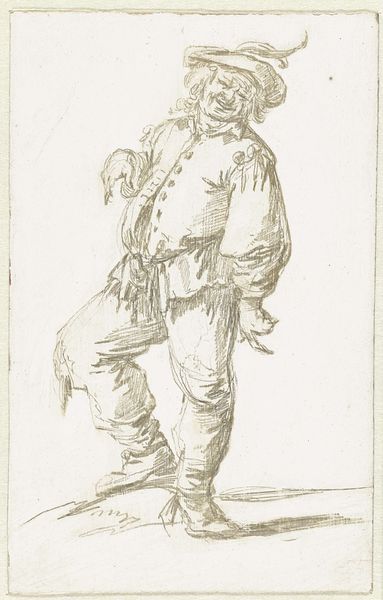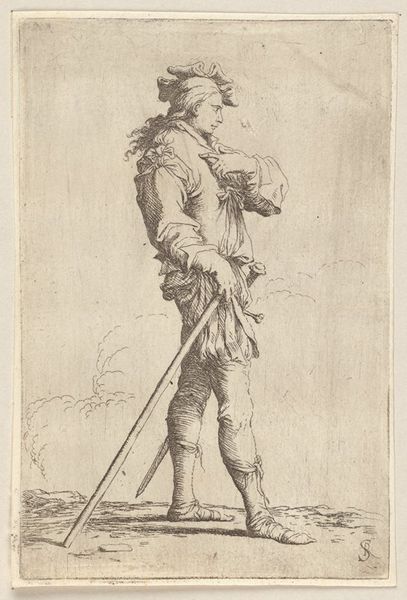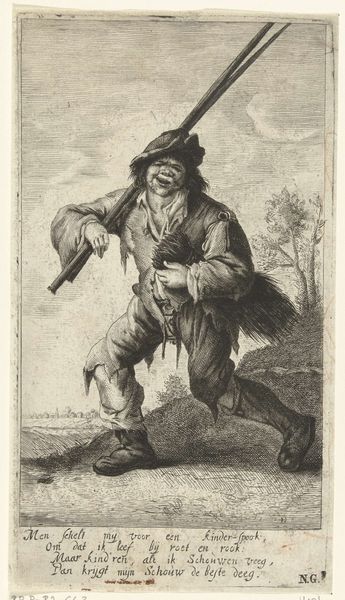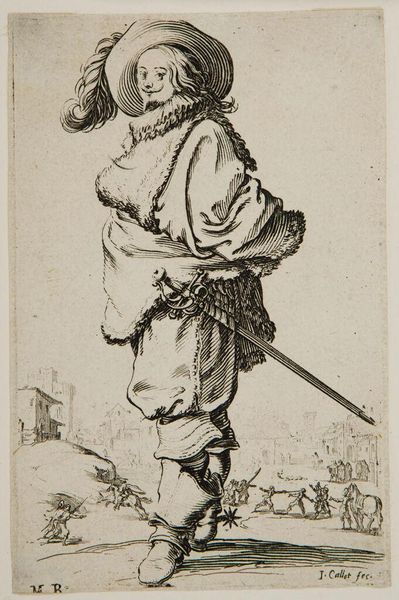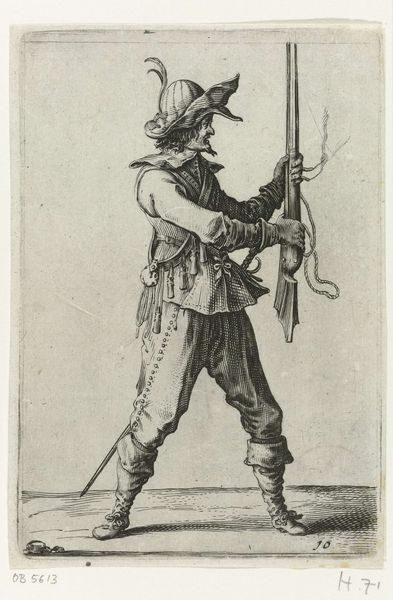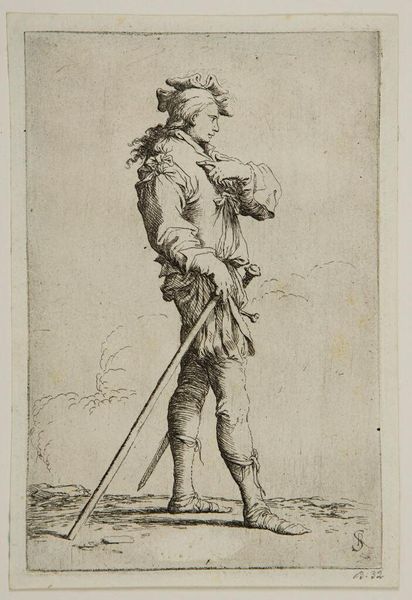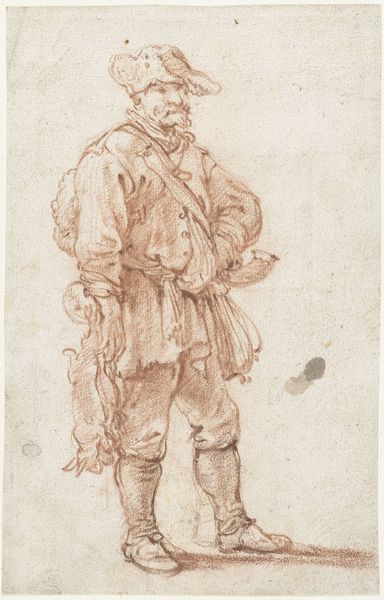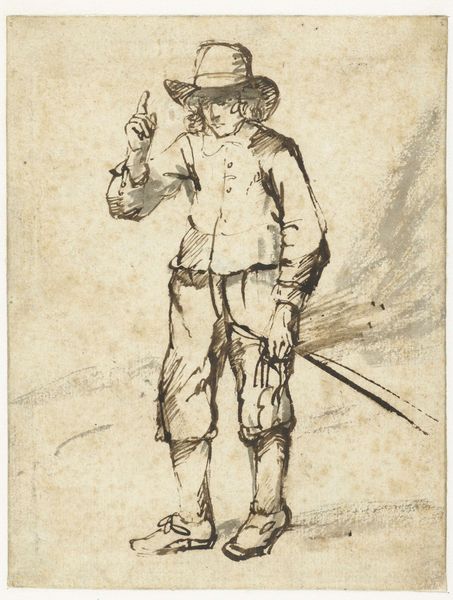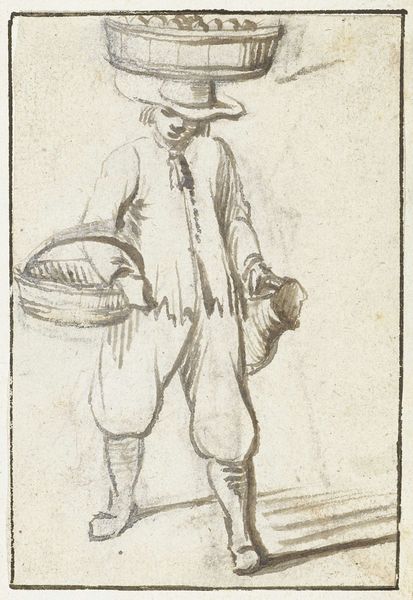
print, etching
#
dutch-golden-age
# print
#
etching
#
caricature
#
figuration
#
genre-painting
Dimensions: height 121 mm, width 80 mm
Copyright: Rijks Museum: Open Domain
Curator: Let’s discuss this print titled “Dansende boer,” or “Dancing Farmer,” likely created sometime between 1633 and 1665. The printmaker goes by the name of Reinhard Voskens, who worked in the style we now recognize as belonging to the Dutch Golden Age. Editor: It has a slightly off-kilter rhythm, doesn't it? The subject's posture and the hatching work together to make him feel somewhat unstable, perhaps intentionally comedic. Curator: Absolutely. Voskens captures a very specific archetype in this character—I think “I. prop-darm.” above his head may lend some insight. It appears the artist intentionally invokes associations of revelry and indulgence. Note the tankard hanging jauntily from his side! The imagery implies commentary on societal class and behaviour. Editor: Agreed. There is that playful contrast between the delicate etching and the peasant subject. He dominates the small space. The light source isn't really identifiable. But that lack gives a very stark appearance and brings forward all these meticulously-placed lines and textures. It looks rather satirical and amusing if I’m honest. Curator: Satire is spot-on. Beyond the comedic and social commentary, prints like these circulated widely, shaping popular perception and memory around social roles. One wonders about how widely circulated it became; how did those who may have been similarly portrayed feel about it? It can often be challenging to decode symbols, and prints often require context to understand who the art served. Editor: Interesting point. Technically, that use of dense hatching to render form, especially around the figure’s cloak, that technique almost feels exaggerated to amplify his gait. It is as if his clothing swells to his enjoyment! And despite its small size, its boldness stands out to me. Curator: It is fascinating how Voskens used accessible and fairly democratic techniques to explore archetypes prevalent in that historical moment. Each detail and gesture invites viewers into social contemplation about class and character through time. Editor: Ultimately, it is a reminder of how artistry can both reflect and shape social views, regardless of scale and era. It’s striking how many layers can be unraveled within a small work of art!
Comments
No comments
Be the first to comment and join the conversation on the ultimate creative platform.
